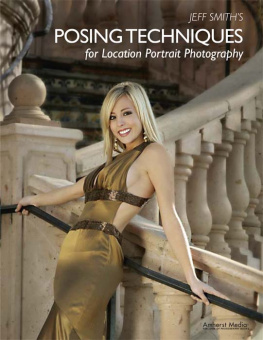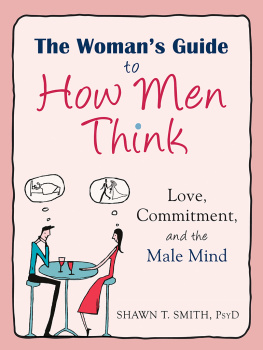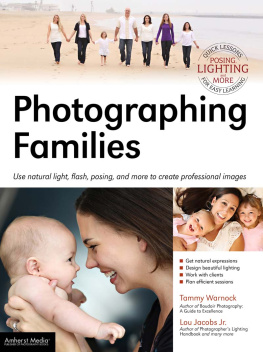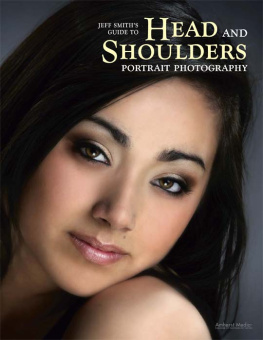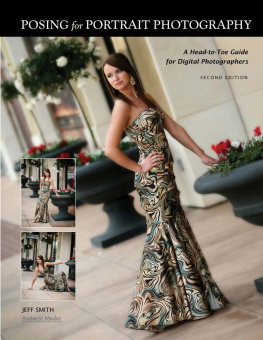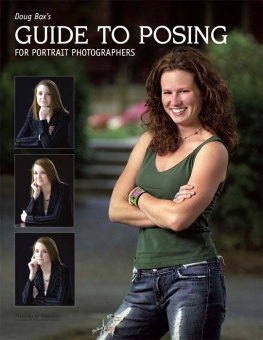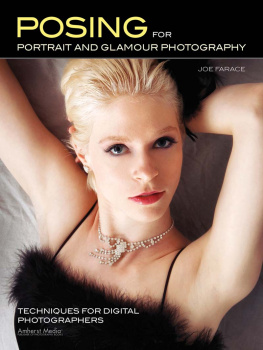Copyright 2008 by Jeff Smith.
All rights reserved.
Published by:
Amherst Media, Inc.
P.O. Box 586
Buffalo, N.Y. 14226
Fax: 716-874-4508
www.AmherstMedia.com
Publisher: Craig Alesse
Senior Editor/Production Manager: Michelle Perkins
Assistant Editor: Barbara A. Lynch-Johnt
Editorial Assistance: Carey A. Maines
ISBN-13: 978-1-58428-225-9
Library of Congress Control Number: 2007926866
Printed in Korea.
10 9 8 7 6 5 4 3 2 1
No part of this publication may be reproduced, stored, or transmitted in any form or by any means, electronic, mechanical, photocopied, recorded or otherwise, without prior written consent from the publisher.
Notice of Disclaimer: The information contained in this book is based on the authors experience and opinions. The author and publisher will not be held liable for the use or misuse of the information in this book.
Introduction
T he human form can be shaped and proportioned to be one of the most beautiful subjects on earth. Conversely, it can be arranged in a such way that it makes even the most attractive person look disfigured. Further complicating this arrangement of the human form are all the different shapes and sizes of people that we, as professional photographers, must work with. It is one thing to make a perfect model look good during a test session or seminarbut use the same poses on a good portion of our average customer base, and you will end up with an unsalable portrait.
So, what is it that makes one arrangement of body parts look so graceful, while another arrangement looks so awkward? I believe there are two parts to posing: the basic mechanics of posing each part of a persons body in a flattering way, and the creative vision to see how this arrangement establishes the basic look or style of the portrait. Both of these subjects will be explored in this book.
Specifically, we will be exploring techniques for location portraits. As you might guess (or have learned from experience), posing on location requires a different approach than posing in the studio. In the studio you have chairs, couches, props, and posing aids. Outdoors, you typically have to work with what the scene has given you. Even at indoor locations, you will not have the total flexibility that you would in your studio. In both situations, you have to use your imagination and sometimes hunt for posing aids that will allow the subject to pose in the way you envision.

Flattering poses arise from a solid understanding of the human body as well as from the creative vision to make the right choices for the setting.

Posing on location requires an different approach than posing in the studio.
Although working on location can be challenging, I find that it produces some of my most creative portraits. This is because it allows me to tailor a portrait specifically to my clients needs, by selecting a location that has meaning to them or reflects their style and vision for their portrait.
As the title implies, this book is on posing. I will talk briefly about other aspects of portraiture on location, but only as they apply to posing. For a more in-depth study of all the other aspects of location photography, please refer to two of my other books: Outdoor and Location Portrait Photography and Jeff Smiths Lighting Techniques for Outdoor & Location Portrait Photography, both from Amherst Media.
1. The Goals of Posing
O ther than lighting and expression, nothing is more important to a professional portrait than posing. Careful, thoughtful posing makes your client look beautiful and completes the overall look of the image in a way that is consistent with its intended use. Furthermore, posing is critical to producing portraits that your clients will actually want to own. This makes your job as photographer more rewardingboth personally and financially.
SUIT THE PURPOSE OF THE IMAGE
There are many reasons why a portrait might be taken. Unfortunately, many photographers approach the posing of a client in the exact same way, no matter what the purpose of the image. For example, the pose youd use for a young woman who wanted a portrait to give to her father would be quite different than youd use if you knew she planned to give the image to her boyfriend. It would also be different than the kind of pose youd want to use if she needed a portrait to promote her new real estate business. (And, for that matter, if the clients new business was a daycare center, youd probably use a different pose for her business portrait than if she were opening a new law practice). Well look at this issue when discussing the purpose of the portrait in .

Mom and Dad will love a portrait like this, but it wouldnt be a good choice if the subject needed to present a professional appearance.

LEFTIn an architectural setting, more formal attire can support a glamorous posing style. RIGHTA casual outfit in an outdoor setting calls for a casual pose.
ENHANCE THE STYLE OF THE IMAGE
Selecting the right clothing and setting goes hand in hand with posing; it is only when the right pose is combined with the proper clothing, in the proper setting, and with the appropriate expression, that the portrait attains a sense of style. Only when everything in a portrait makes sense visually do you achieve a portrait that really works. Achieving this requires that you look at every aspect of the portrait and match each element to the others.
FLATTER THE SUBJECT
A client I photographed years ago led me to write my book Corrective Lighting, Posing, and Retouching Techniques for Portrait Photographers (also from Amherst Media). She was the person who taught me what my job as professional photographer really was.
This young lady was very overweight and none of the classes I ever had taken, or the books I had read, had prepared me for photographing a person like this. She wasnt the first overweight person I photographed, of course, but for the first time I really thought about how this young lady would feel looking at her images. So I went into her session and I start hiding every area where weight gain was visible. I used flowers, fake trees, columns, arms, legs, and hair to cover the areas I knew she wouldnt want to see. When I was done I was exhausted.
This was in the days of film, so two weeks later the young lady and her mother came in to see the portraits. I happened to be there, so I stood by while they looked at all the images. As the mother looked at the proofs she started to cry. She walked up to me, hugged me, and said, I always tell my daughter that she is a beautiful woman, and these portraits show the beautiful woman that I see.


People deserve to look great in their images. Your job as a professional photographer is to make this happen for them.

